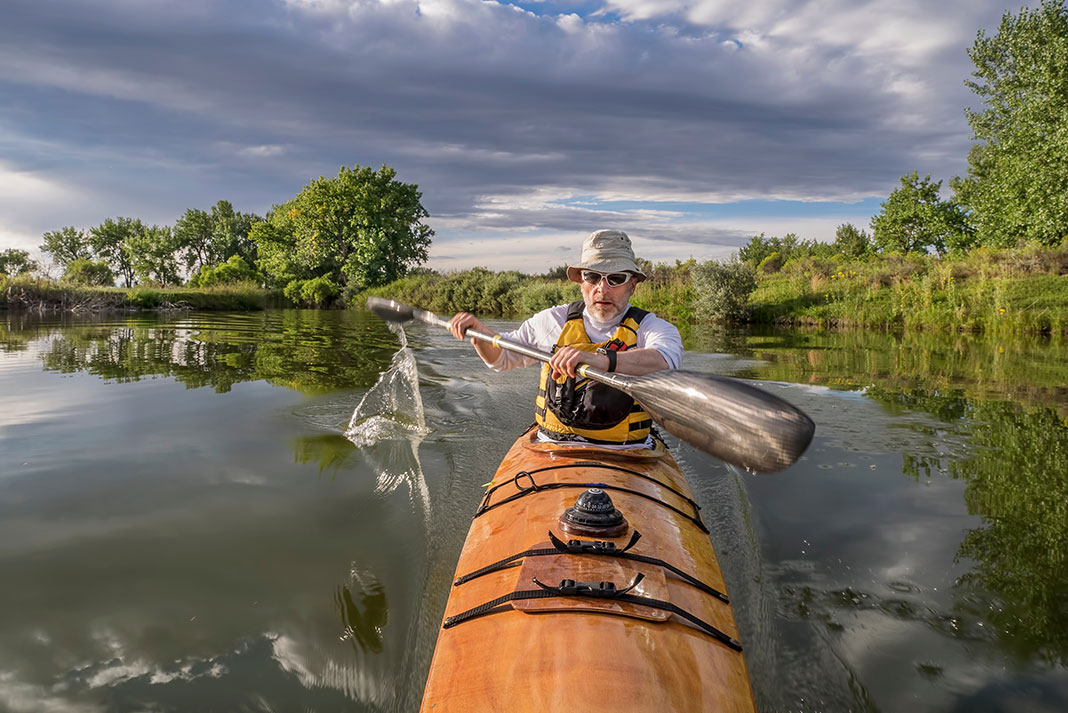
DIY Guide to Assembling a Lightweight Wooden Kayak
Are you ready to take your paddling adventures to the next level? Building your own lightweight wooden kayak is a rewarding journey that blends craftsmanship with a deep connection to the water. This comprehensive guide will walk you through every step, from selecting materials to finishing touches.
Choosing Your Kayak Design and Materials
The first step is choosing a design that suits your needs and skill level. There are countless kayak designs available, from traditional Greenland kayaks to modern touring kayaks. Consider factors like:
- Length: Longer kayaks offer greater speed and stability, while shorter kayaks are more maneuverable.
- Width: Wider kayaks are more stable for beginners and fishing, while narrower kayaks are faster for touring.
- Depth: Deeper kayaks offer more storage space and stability, while shallower kayaks are lighter and faster.
Once you've chosen a design, you'll need to select the appropriate materials. Lightweight woods like cedar, spruce, and mahogany are popular choices for kayak construction. These woods are strong, durable, and easy to work with. You'll also need epoxy resin, fiberglass cloth, and other supplies for bonding and sealing your kayak.
Building the Kayak Frame
Start by building the kayak's frame, which provides the structural foundation. This typically involves creating a series of ribs, stringers, and bulkheads that are shaped and joined to form the kayak's hull.
Cutting and Shaping the Wood
Use a band saw or table saw to cut the wood to the dimensions specified in your chosen plan. Carefully shape each piece of wood using hand tools like planes and chisels. Ensure your cuts are precise and smooth to create a strong and durable frame.
Assembling the Ribs and Stringers
Securely join the ribs to the stringers, ensuring they are correctly aligned and spaced according to your plan. Use wood glue and clamps to bond the pieces together. You can also use screws or dowels for added strength.
Adding the Bulkheads
The bulkheads divide the interior of the kayak and help maintain its shape and buoyancy. Cut and shape them according to your plan and secure them to the frame using glue and fasteners.
Creating the Hull
With the frame complete, it's time to create the hull, which gives the kayak its watertight shape.
Applying the Skin
Use thin sheets of wood, known as "planking," to cover the frame. Use marine-grade epoxy resin to bond the planks to the frame and each other. You can use clamps and weights to ensure a smooth and even surface.
Adding Fiberglass for Strength
Apply layers of fiberglass cloth to the hull to create a strong and waterproof shell. This helps to distribute stresses evenly and makes the kayak resistant to bumps and scratches.
Finishing Touches
After the fiberglass has cured, you can move on to the finishing touches that will give your kayak its final look and protection.
Sanding and Fairing
Sand the hull and deck to remove any imperfections and create a smooth, even surface. Use a fairing compound to fill in any remaining gaps or blemishes.
Painting and Sealing
Apply a primer to the hull and deck to create a smooth, even surface for the final paint. Choose a marine-grade paint that is durable and UV-resistant.
Adding Hardware and Accessories
Install essential hardware such as a seat, footrest, and hatch covers. Consider adding accessories like a paddle holder, dry bag, or spray skirt to enhance your kayaking experience.
Launching Your Kayak
Once your kayak is complete, it's time for the moment you've been waiting for: launching it into the water.
First Paddle
As you gently push your handcrafted kayak onto the water, savor the feeling of accomplishment. Take a moment to admire the smooth lines and craftsmanship of your creation. Your first paddle will be a testament to your dedication and skill.
Continued Maintenance
To keep your wooden kayak in top shape, maintain it regularly. Rinse it with fresh water after each use, inspect for any damage, and apply a sealant periodically to prevent moisture damage.
Building a lightweight wooden kayak is a challenging and rewarding experience. With patience, dedication, and the right resources, you can create a beautiful and durable kayak that will provide you with years of enjoyment on the water.








No comments:
Post a Comment
Note: Only a member of this blog may post a comment.